Adaptive Equipment and Durable Medical Equipment Resource List
DME items may be purchased at:
- Medical supply stores such as Discount Medical (SeaTac or Tacoma), Eastside Home Medical Supply (Bellevue), Home Health Solutions (Renton), Kleenwell Medical Services (Burien), Norco Medical (Seattle, Renton, Tacoma, Everett), Bellevue Health Care (multiple sites)
- Pharmacies such as RiteAid, Bartells, Walgreens - mostly online
- Retail stores or online such as Amazon, Walmart, Home Depot, Target
- Thrift Stores such as Goodwill, Value Village, Salvation Army, local senior centers.
- Donation closets such as MSSH Donor Closet (Edmonds, Tacoma), and Meyer Medical Equipment Center (Bellevue)
See below for examples of Durable Medical Equipment and how they may be useful for you around the home, in the bathroom, and with getting dressed.
Required for surgery
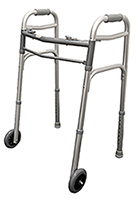
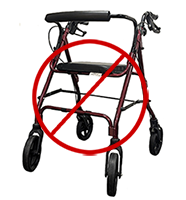
Front wheeled walker. Your orthopedic team can order this piece of equipment for you.
Note: A 4-wheeled walker is not appropriate.
Required for surgery if you have stairs

Single point cane. Required if you must navigate stairs immediately after surgery (inside or outside). Even if you don't have stairs, consider obtaining a single point cane prior to surgery, as patients transition from a front-wheeled walker to a single point cane when ambulating after surgery.
Around the home
Furniture risers/cushions: These add height to furniture to help elevate a sofa, chair, or bed. Prior to surgery, test out the chairs/couches/bed that you will be using after surgery. Do they feel too low? If you have trouble getting out of a chair, a furniture riser or a cushion will be helpful to elevate your seat or make it easier to stand.
In the bathroom
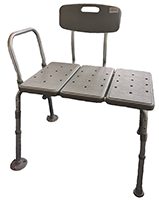
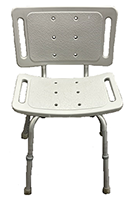
Tub transfer bench or a shower chair: Can be helpful when showering, especially immediately after total joint surgery. Those with decreased balance, decreased physical strength or mobility difficulties before or after surgery will find a tub transfer bench or shower chair helpful and safer during your recovery.
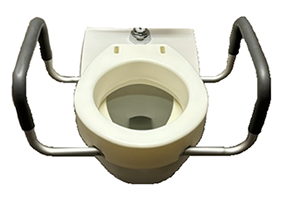
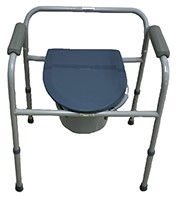
Toilet seat risers or over the toilet commodes: Increases the height of your toilet seat. If it is difficult for you to rise from your toilet prior to surgery, you will likely benefit from elevation and arm support. You want to make sure your feet touch the floor and you are able to rise easily when considering elevation.
Grab bars: A variety exist, and each bathroom set up is unique. Grab bars install into the wall or tub to improve stability and safety when in the bathroom.
If you find that you tire easily when standing prior to surgery, or if you have any concerns regarding your balance or maneuvering while in the bathroom before or after surgery, having something stable to hold onto would be beneficial.
Note: Grab bars must be installed, suction cup grab bars are NOT safe.
Help with dressing
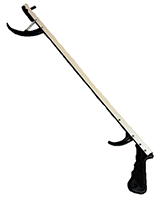
Featherlite reacher: Reachers can be helpful when dressing, picking up items off the floor,or light objects on a cabinet or shelf.
Watch this video to see how the reacher can help with putting on and taking off pants.
Sock aid: Allows you to put on your socks more easily. Sock aids can be helpful when dressing, specifically when putting on your socks so you do not have to bend forward, or if you have difficulty bending.
Watch this video to see how a sock aid works.
Long-handled shoehorn: Allows you to put on your shoes more easily. Can be helpful when putting on your shoes, so you don't have to bend forward; assists with getting your heels into your shoes.
Watch this video on how to use a long-handled shoehorn.
Learn more
If you have more specific questions about individualized needs or home environments, an occupational therapist can help. Please let your orthopedic team know you would like to speak with an occupational therapist before surgery. Also see our home safety checklist page to ensure your home is safe and comfortable after surgery.